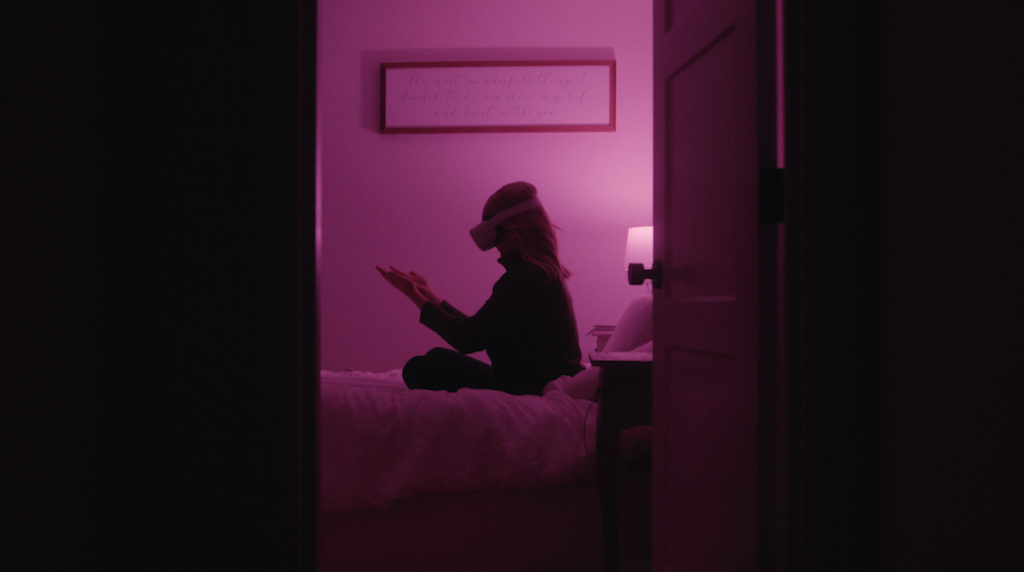
How To Maximize Your Efficiency As A Filmmaker
One of the most difficult parts of being a professional filmmaker is effectively managing and budgeting your time.
Continue ReadingFrom a content creation perspective, with the technological spotlight currently focused on Artificial Intelligence and increased camera performance, there’s one piece of technology that I believe is being slept on. In a big, big way:
Virtual Reality.
Sure, AI is going to change the way we create content. Better gear is going to improve the quality of said content. But VR has the potential to be the biggest shift in the way we consume our content since the proliferation of the smartphone.


This is the biggest question that people ask when it comes to virtual reality and augmented reality. The high-end tech functionality already exists. So if it’s so powerful, why aren’t virtual reality headsets everywhere, already?
I believe the answer can explained via historical precedent. Specifically, in the video game world.
In the 1970s, video games such as Pong, Space Race, and Breakout were first introduced to the world. This was a revolutionary new form of entertainment. But even as the 1980s saw the creation of classic games such as Pac Man, Mario Bros, and Tetris, video games really didn’t become a part of mainstream American culture until the 1990s. Why was this?
Well, a couple things happened. First, three dimensionality was introduced into the gaming world. And second, gaming consoles begun to be mass-produced and became much, much cheaper, specifically with the first Sony PlayStation launching in 1994.
Once the internet became a part of everyday life in the 2000s, the gaming industry grew at an astonishing rate.
The connecting theme here is that a combination of directly and indirectly-related technology (the PlayStation, better computers, the internet, etc.) allowed the gaming medium to grow into a household activity.
These things just took time to develop.

In order for the VR market to truly take off, two things need to happen: VR headsets (such as the Oculus Quest or Meta Quest, Apple Vision Pro, etc.) need to become cheaper, and there needs to be a content-based incentive to adopt the new platform.
Ironically, I think this content-based incentive could come via the gaming industry, thus elevating the status of VR as an entire medium.
For example, the minute that a famous, household brand (Halo, Call of Duty, Grand Theft Auto, etc.) makes the VR experience essential for gameplay, gamers will flock to VR and VR games. Or perhaps a streaming service starts developing and releasing a VR-based series.
All it will take is for that immersive experience to be married with a legitimate, culturally-significant piece of content.
Currently, there is not a ton of great VR content currently available, because it represents a risky investment for studios and developers. But the second Sony (Playstation VR, or PSVR2 is already gaining popularity) or Microsoft decides to be the first one to make it an integral part of a product, the floodgates will open.
If VR gains a cultural foothold via a release such as this, it will spread like wildfire through the other sectors of the content industry, which includes videos, advertising, social media, and any other digital content.


Again, I think VR has the potential to be the biggest shift in digital content consumption since the mobile phone. And considering the fact that smartphones have influenced everything from the length of our videos to the aspect ratio in which we shoot, I know that’s a bold statement.
But we’re talking about a lightweight, ultra high-resolution pair of glasses that could provide entertainment and information to you in real time as you wear it, regardless of where you are in the real world. These headsets could eventually replace our watches, phones, tablets, and computers, doing everything that a smartphone does, but with immersive detail and precision. Even as far as the healthcare industry, VR and AR glasses could provide a massive upgrade in online meeting experiences. If the pandemic taught us anything, it’s that the need for digital communication will only grow and grow. There’s a reason why Meta has invested so much resources into developing VR and AR. And yes, the unveiling of the lofty Metaverse vision fell decidedly flat. But it might have just been too early. As Palmer Lucky (the man who sold Oculus Rift to Facebook for $3 billion) stated, “the final medium is virtual reality. Virtual reality will replace everything else”
So when it comes to VR and AR, it’s not a question of if, but a question of when.
And content creators would do well to keep AR/VR field-of-view production in the backs of their minds as it gains more and more momentum. Because when it hits, whether it’s next month or in five years, it is going to present a massive new opportunity for those early adopters proactive enough to take it.
Kevin Graham is the Creative Director at Filmpac.

One of the most difficult parts of being a professional filmmaker is effectively managing and budgeting your time.
Continue Reading
Will iPhone cameras ever actually replace high-quality digital cameras, or is that just more fear-mongering on the internet?
Continue Reading
Things move fast in the current video content production world, in terms of both trends and available technology. So where is 8k video?
Continue Reading
In the world of filmmaking, artificial intelligence (AI) has emerged as a game-changer. Here are the 5 best AI tools for filmmakers
Continue Reading
Filmpac’s newly-designed Project Feature is a powerful tool for collaborative video editing. Here’s a quick rundown of how it works.
Continue Reading

One of the most difficult parts of being a professional filmmaker is effectively managing and budgeting your time.
Continue Reading
Want to make money selling footage through a major stock footage platform like Filmpac? This page will walk you through the processs.
Continue Reading